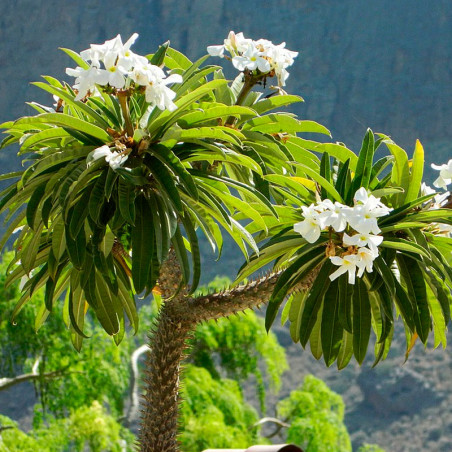





Succulent shrub native to the island of Madagascar, where it can grow into a tree. With a thick, spiny stem, it thrives in warm, sunny locations with minimal care.
Pachypodium lamerei, commonly known as the Madagascar palm (though not a true palm), is a striking and sculptural succulent native to southern Madagascar. Despite its exotic appearance, it is surprisingly easy to grow in warm climates or as a houseplant in cooler regions.
This succulent shrub can reach several meters in height in its natural habitat, developing a tree-like form. Its thick, cylindrical stem is densely covered with sharp spines, serving as a natural defense against herbivores. The stem stores water, allowing the plant to survive long periods of drought in hot, sunny environments.
At the top of the stem, it produces a crown of long, narrow, glossy leaves that resemble palm fronds—hence its common name. Under optimal conditions and with plenty of light, Pachypodium lamerei may bloom with large, fragrant white flowers, similar to those of oleander, though this is more common in mature, well-established specimens.
Thanks to its resilience, architectural beauty, and low maintenance, it’s perfect for succulent collections, xeriscapes, or bright indoor spaces. It prefers well-drained soil and moderate watering, allowing the substrate to dry completely between waterings. It does not tolerate frost, so in cold areas, it should be protected or grown in pots that can be moved indoors during winter.

| January | February | March | April | May | June | July | August | September | October | November | December |
Data sheet
No customer questions for the moment.